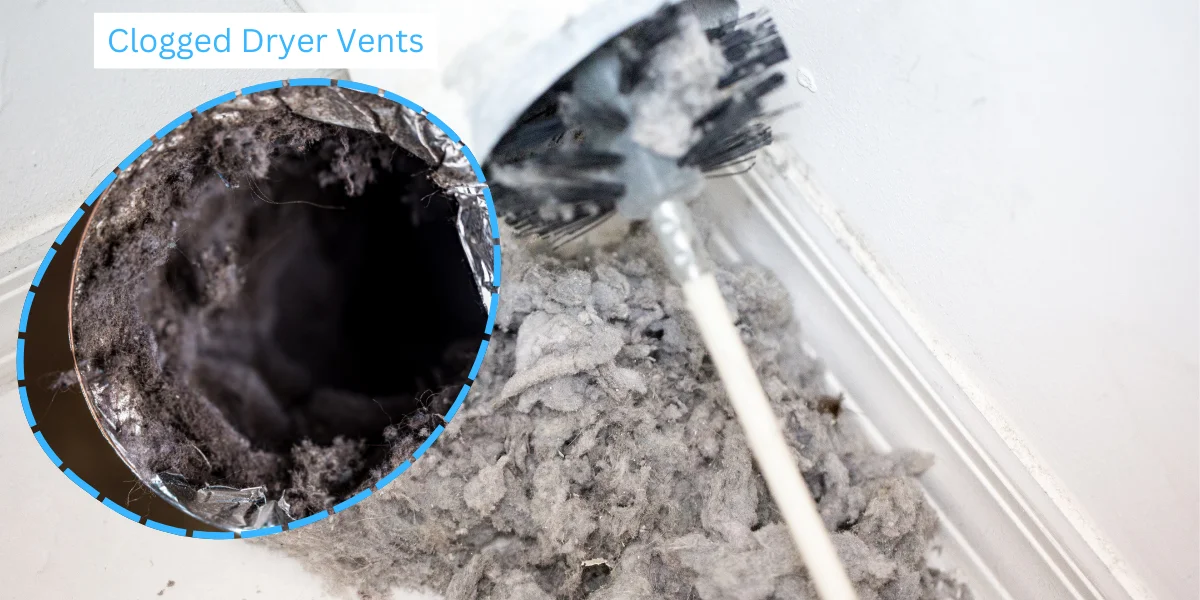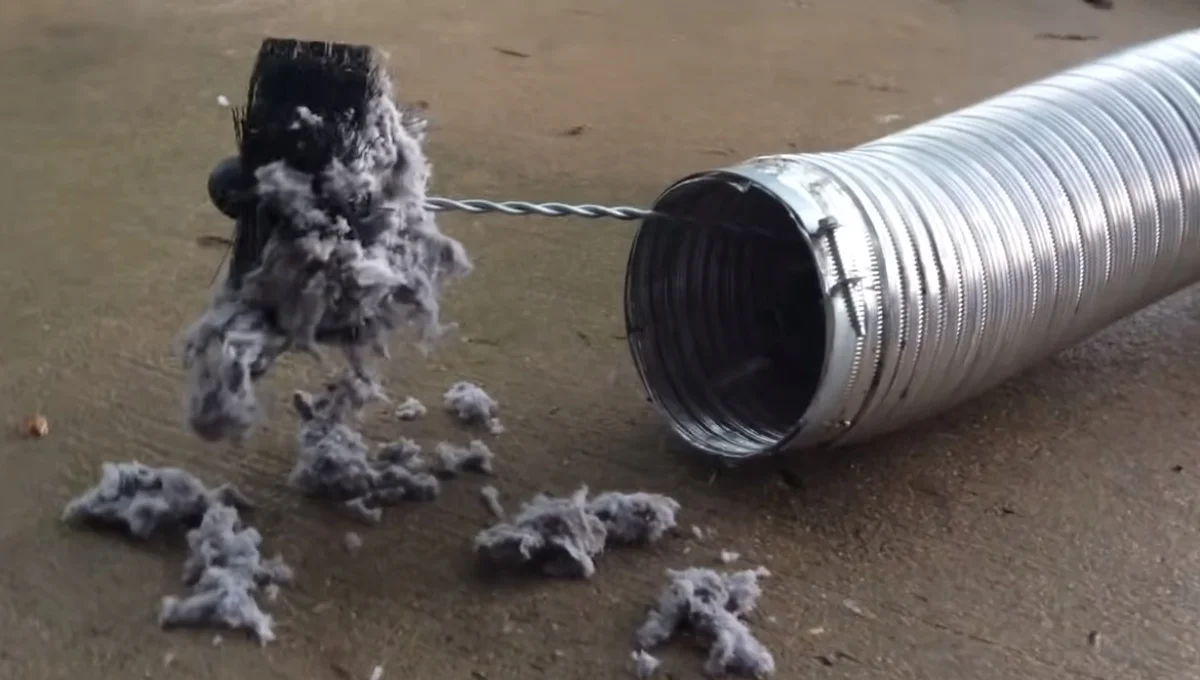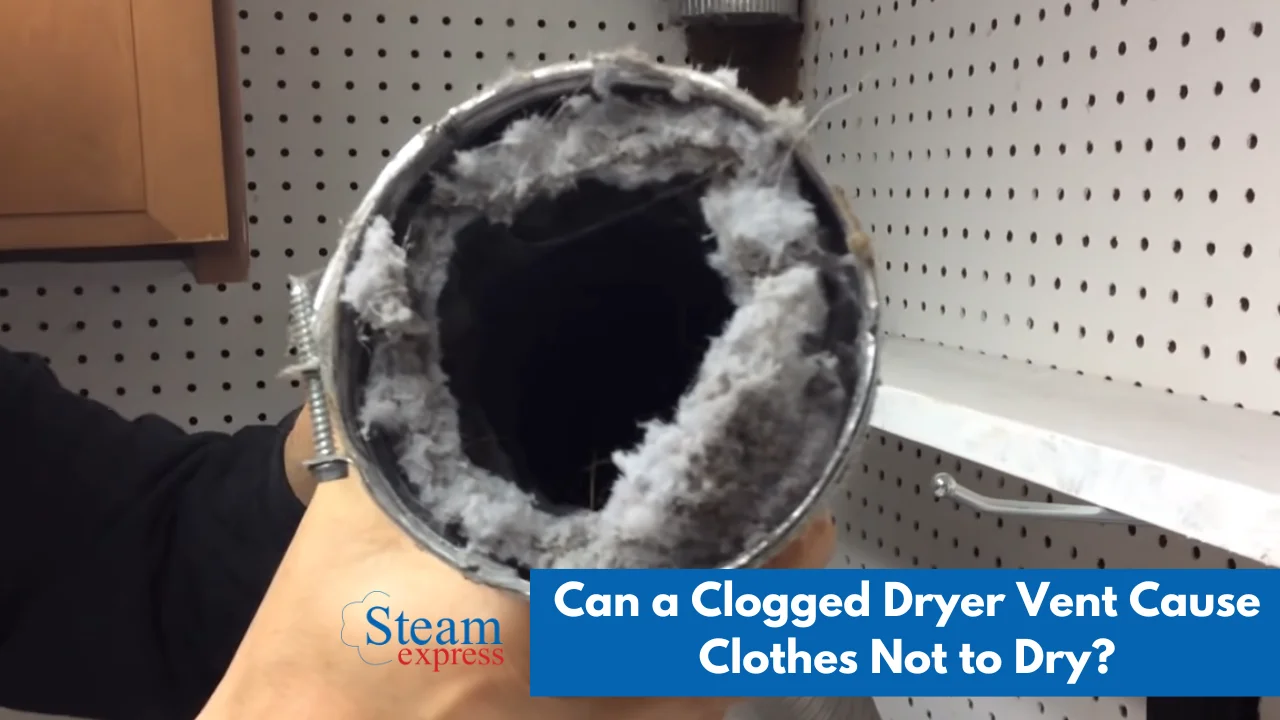Have you ever noticed your clothes taking forever to dry in the dryer? You run a cycle, open the dryer door, and ….. damp clothes. Ugh! It’s frustrating and wastes time and energy. But what could be causing this? The culprit might be a simple one: a clogged dryer vent. So, can a clogged dryer vent cause clothes not to dry?
Here’s the brief: Yes, a clogged dryer vent can stop air from escaping properly, which ultimately makes it hard for the dryer to dry clothes effectively. Cleaning the vent regularly can help prevent this problem.
So, without further delay, let’s get into the details of this crucial topic now.
Do clogged dryer vents cause clothes not to dry?
A clogged dryer vent can definitely cause clothes to dry improperly. When the vent is blocked, hot, moist air from the dryer can’t escape efficiently, so it takes longer for clothes to dry.

Here’s the link between clogged vents and damp clothes:
The dryer works by spinning your wet clothes in hot air. This hot air takes away the wetness from your clothes. But this hot air needs to go somewhere! That’s where the dryer vent comes in. It’s like a pipe that carries the steamy air out of your home, usually to the outside.
Now, think about what would happen if that vent gets blocked with lint, dust, or other stuff. All that hot, steamy air gets stuck inside the dryer. If it can’t escape, it can’t dry your clothes properly. Instead, your dryer just keeps spinning your clothes in the same hot, damp air, and they stay wet.
Visit our informative blog to learn, “Are indoor dryer vents safe?”
How Do I Know If My Dryer Vent is Clogged?
Here are signs your dryer vent might be blocked:
- Clothes Take Forever to Dry: If it takes more than 30-40 minutes for your clothes to dry, your dryer vent might be blocked. The clog traps hot, moist air, making drying slower. If your clothes feel damp after drying, it’s time to clean your vent.
- Hot Dryer: Does your dryer feel really hot after a cycle? This could mean it’s working too hard because of a blocked vent.
- Burning Smell: If you smell something burning from your dryer, it’s serious! Stop using it right away and unplug it to avoid a fire hazard! According to the National Fire Protection Association (NFPA), dryers caused 15,520 fires between 2006-2010. Most of these fires happened because people didn’t clean their dryer vents.
Additional signs to watch out for:
- The flap on the outside of the dryer vent doesn’t open well.
- There’s dirt around the outdoor vent of the dryer.
- You feel too much heat in the room where the dryer is running.
- It’s been over a year since you last cleaned the dryer vent.
Visit our insightful blog to get the right answer to your question, “How often should condo dryer vents be cleaned?”
How Do You Fix a Dryer That Takes Too Long to Dry?
If you think your dryer vent is blocked, it’s important to fix it quickly. Here’s what you can do:

- Clean the Lint Trap: Always clean the lint trap before each load. This helps stop lint from building up in your vent.
- Check the Vent: Look at the vent outside your home to see if it’s blocked with lint or stuff. You can use a vacuum or a special brush to clear it out.
- Get Professional Help: If you can’t clear the vent yourself, think about hiring experts to clean it. They have the right tools and know-how to do it well.
- Regular Care: Remember to clean your dryer vent at least once a year to keep it clear and make sure your dryer works properly.
Plus, you can usually clean the vent yourself. Here are some quick tips:
- Pull out your dryer and disconnect the vent hose.
- Utilize a dryer vent cleaning kit or a long-handled brush to remove lint and debris from the hose and the dryer vent opening.
- Vacuum the area around the dryer vent outside your house.
- Make sure the vent flap outside your house opens and closes properly.
Remember: A clean dryer vent helps your clothes dry faster, saves you money on energy bills, and reduces the risk of fire. So next time your clothes seem stuck in damp-land, check your dryer vent! It might be the simple fix you’ve been looking for.
Visit our informative blog to learn what happens if you can’t vent your dryer outside.
Contact a Pro
If you’re having trouble with your dryer in Houston, Texas, Steam Express offers professional dryer vent cleaning services. Our licensed and insured team ensures a thorough cleaning to improve your dryer’s performance and safety.
We use eco-friendly methods and vacuum out lint and debris from the vents. Our preventive maintenance helps prevent fires and ensures faster drying times. Call now for a free estimate and enjoy special discounts!
Wrapping Up
So, to sum it up, a clogged dryer vent can indeed cause clothes not to dry properly. It’s essential to address this issue immediately by cleaning the vent regularly and seeking professional help if needed. By keeping the vent clear, you can ensure efficient drying and reduce the risk of fire hazards. So, remember, “Can a Clogged Dryer Vent Cause Clothes Not to Dry?” – Yes, it can, but with proper maintenance, you can keep your dryer running smoothly and your clothes dry and fresh.
FAQs
Why are my clothes taking so long to dry?
Your clothes could be taking forever to dry because of a clogged dryer vent. This traps hot, moist air inside the dryer, making it hard for your clothes to get dry!
How often should I clean my dryer vent?
Ideally, clean your dryer vent every year or more frequently if you use your dryer often.
What are some dangers of a clogged dryer vent besides damp clothes?
Clogged vents can overheat your dryer, increasing fire risk. Gas dryers can also trap carbon monoxide if the vent is clogged.
Besides lint, what else can clog a dryer vent?
Debris, like dryer sheets, fabric softener wipes, or even coins, can get lodged in the vent and cause clogs.
My vent hose is made of metal. Can it still get clogged?
Yes, even metal vent hoses can trap lint and debris over time. Regular cleaning is important for all types of dryer vents.
Are there any dryer settings that can help prevent clogged vents?
Some dryers have an “air fluff” or “cool down” cycle that helps remove residual lint from the dryer before the next load.


